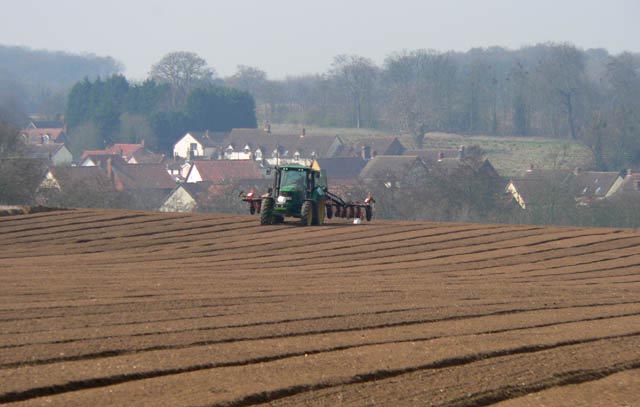
The number of workers killed in Britain last year has fallen, official statistics published today show. Provisional data released by the Health and Safety Executive (HSE) reveals that 148 workers were fatally injured between April 2012 and March 2013, compared with 172 in the previous year. The overall rate of fatal injury has dropped to 0.5 per 100,000 workers, below the five-year average of 0.6.
However, agriculture remains the industry with the highest rate of fatal injuries.
The latest figures from the Health and Safety Executive (HSE) have been published during Farm Safety Week designed to highlight the risks farmers face every day.
The statistics reveal a fall in fatal accidents this year to 29 workers and 7 members of the public - this is down from 35 workers and 6 members of the public in 2011/12.
The Farm Safety Partnership, which is chaired by the NFU, is an industry-led initiative committed to improving agriculture’s safety record and to help reduce the number of deaths and serious injuries.
NFU regulatory affairs adviser Benjamin Ellis said: “It is sad that agriculture has retained the highest fatal accident rate for a number of years now. But we are actively working hard to try to improve the safety record of the industry. The Farm Safety Partnership is leading the way in raising awareness with each organisation that is represented dedicated to raising safety standards.
“The NFU meets with our members regularly to discuss the importance of on-farm safety and we produce a number of safety related briefings and business guides to help farms consider the risks from their activities.”
“It is vital that everyone in the industry plays their part to help improve standards - simple measures like informing someone of what you are doing, taking a charged mobile phone in your pocket and knowing that a 999 call doesn’t need signal from your provider can save your life; but it is also important that people take action to prevent accidents from occurring like following the safe stop procedure (hand brake on, controls in neutral, engine off, keys out) and not cutting corners and taking risks such as when working at height or handling livestock.
“The NFU is committed to helping to reduce these accident statistics and believe that a good safety record is proof of a professional, modern industry.”
Britain has had one of the lowest rates of fatal injuries to workers in leading industrial nations in Europe consistently for the last eight years.
Judith Hackitt, the HSE Chair, said “These figures are being published in the same week as the 25th anniversary of the Piper Alpha disaster, and are a reminder to us all of why health and safety is so important. Although the number of people killed at work has dropped significantly, last year 148 people failed to return home to their loved ones.
“The fact that Britain continues to have one of the lowest levels of workplace fatalities in Europe will be of little consolation to those who lose family members, friends and work colleagues.
“HSE is striving to make health and safety simpler and clearer for people to understand so that more people do what is required to manage the real risks that cause death and serious injury.
“We all have a part to play to ensure people come home safe at the end of the working day and good leadership, employee engagement and effective risk-management are key to achieving this.”
The new figures also show the rate of fatal injuries in several key industrial sectors:
39 fatal injuries to construction workers were recorded – a rate of 1.9 deaths per 100,000 workers, compared to an average of 53 deaths in the past five years and a decrease from the 48 deaths recorded in 2011/12.
29 fatal injuries to agricultural workers were recorded – a rate of 8.8 deaths per 100,000 workers, compared to an average of 36 deaths in the past five years and a decrease from the 35 deaths recorded in 2011/12.
10 fatal injuries to waste and recycling workers were recorded – a rate of 8.2 deaths per 100,000 workers, compared to an average of 6 deaths in the past five years and an increase from the 5 deaths recorded in 2011/12.
Across Great Britain:
118 fatal injuries in England were recorded – a rate of 0.5 deaths per 100,000 workers, compared to an average of 144 deaths in the past five years and a decrease from the 131 deaths recorded in 2011/12
22 fatal injuries in Scotland were recorded – a rate of 0.9 deaths per 100,000 workers, compared to an average of 22 deaths in the past five years and an increase from the 19 deaths recorded in 2011/12.
8 fatal injuries in Wales were recorded – a rate of 0.6 deaths per 100,000 workers, compared to an average of 12 deaths in the past five years and a decrease from the 19 deaths recorded in 2011/12.
